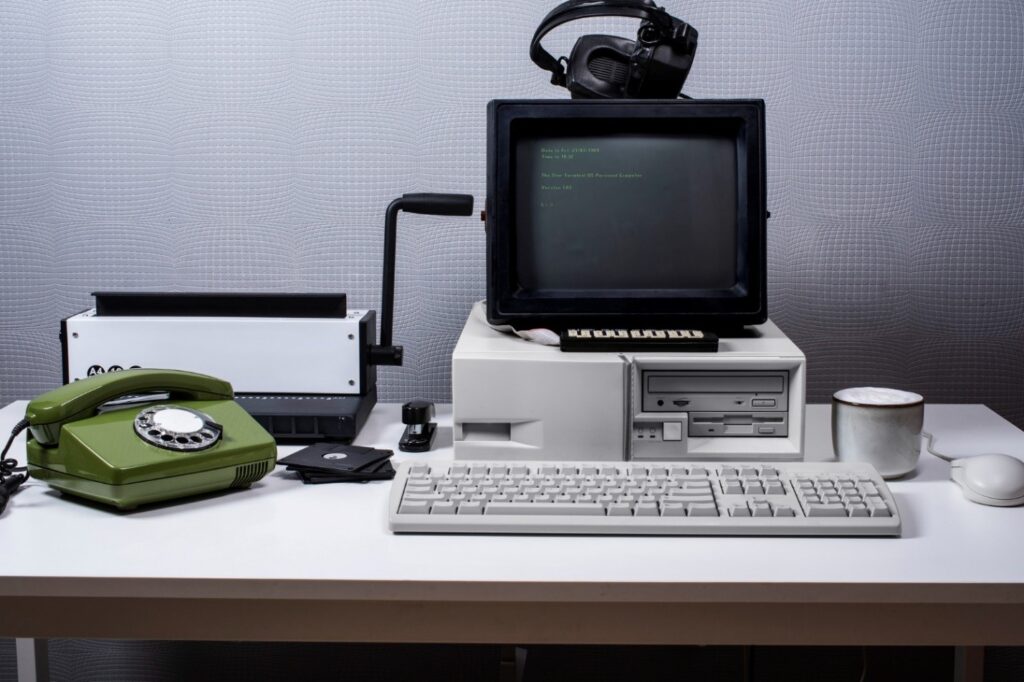In the world of technology, operating systems (OS) have played a pivotal role in shaping how we interact with computers and devices. This evolution has been remarkable from the early days of mainframes to the modern, user-friendly operating systems we use today. In this article, we will journey through time to explore the fascinating evolution of operating systems.
Mainframes: The Birth of Operating Systems
Mainframes, the giants of early computing, marked the inception of operating systems. These colossal machines were the size of small rooms and required highly specialized knowledge to operate. In the 1950s, systems like the IBM 704 and UNIVAC I relied on rudimentary operating systems to manage tasks such as input/output operations and memory allocation.
As computing needs grew, the demand for more advanced operating systems became apparent. The introduction of IBM’s OS/360 in the 1960s was a significant milestone. It brought about a level of compatibility and standardization previously lacking, making it easier for software developers to create applications for various mainframe systems.

The Rise of Personal Computers and Desktop Operating Systems
The 1970s and 1980s witnessed the advent of personal computers (PCs), revolutionizing the computing landscape. With the introduction of systems like the Apple II and the IBM PC, desktop operating systems became necessary. Microsoft’s MS-DOS, an early text-based OS, dominated the market during this era. Users interacted with PCs primarily through command-line interfaces, typing text commands to perform tasks.
The breakthrough came with the release of Windows 3.0 in 1990, which introduced a graphical user interface (GUI) and paved the way for user-friendly computing. GUI-based operating systems like Windows and Apple’s Mac OS (later macOS) made computers more accessible to a wider audience. The use of icons, windows, and a mouse made tasks as simple as clicking and dragging, setting the stage for a new era of computing.
To familiarize yourself with classic computer hardware, you can explore https://play-fortune.ro‘s collection of vintage gambling games from the early PC era.
The Internet Age and Networked Operating Systems
As the internet became an integral part of our lives, operating systems had to evolve to accommodate online connectivity demands. Operating systems such as Windows 95 and later versions incorporated built-in networking support, making connecting to the World Wide Web more accessible.
Unix-based operating systems gained popularity during this time, especially in server environments. Linux, an open-source Unix-like OS, emerged as a powerful contender and remains a staple in server rooms worldwide. Its flexibility, stability, and security made it a preferred choice for web hosting and other server applications.
Mobile Operating Systems: The Era of Smartphones
The 21st century has ushered in the era of smartphones, with operating systems tailored for handheld devices. Apple’s iOS and Google’s Android OS dominated the market, offering touch-based interfaces, app stores, and seamless integration with cloud services. These mobile operating systems transformed how we communicate, work, and access information on the go.
Modern Operating Systems: A Seamless Experience
Today, modern operating systems offer an unprecedented level of integration and user-friendliness. Windows 10 and 11 continue to dominate the desktop environment, balancing familiarity and innovation. macOS continues to evolve, blending its Unix-based core with a sleek design and seamless synchronization with other Apple devices.
In the world of mobile, iOS and Android have matured into powerful ecosystems. Smartphones and tablets have become indispensable tools, enabling everything from communication and productivity to entertainment and gaming. Mobile operating systems now support advanced features like facial recognition, augmented reality, and voice assistants, further enhancing user experiences.
The Future of Operating Systems
As technology advances, the future of operating systems holds exciting possibilities. We are witnessing the convergence of operating systems across different device categories. Concepts like Windows 10X (now known as Windows 11 SE) aim to create a unified experience across PCs and foldable devices. Linux distributions are gaining traction in the consumer market, offering alternatives to proprietary systems.
Moreover, operating systems are adapting to emerging technologies like artificial intelligence (AI) and the Internet of Things (IoT). AI-driven personal assistants are becoming more integrated into OS interfaces, and IoT devices seamlessly connect to operating systems to enhance automation and control.
In conclusion, the evolution of operating systems has been a journey from the massive mainframes of the past to the sleek, interconnected systems of today. These systems have not only shaped the way we interact with technology but have also transformed the way we live and work. As we progress, it will be fascinating to see how operating systems adapt and innovate in response to the ever-changing technology.
Stay up to date with the latest in technology and operating systems. Discover new opportunities in online gaming at https://play-fortune.ro/jocuri/pacanele-gratis/ with free slot machines.
